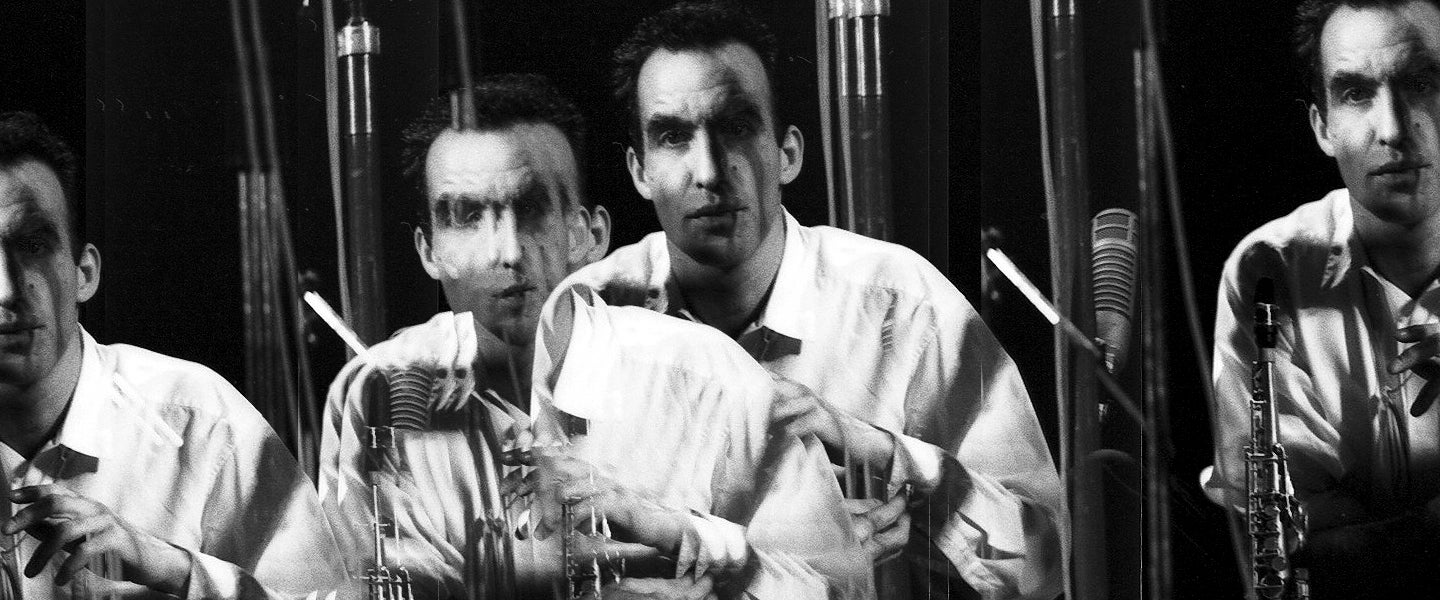He was best friends with Jean-Michel Basquiat and often let the soon-to-be boy king artist sleep on his floor. He’s the star of Jim Jarmusch’s early films. He also composed the music and played his sax in those movies, giving the films their distinctive feel and soundtrack. He’s an accomplished painter, whose work was proudly displayed on the walls of Anthony Bourdain’s home. Recently, bassist Flea of the Red Hot Chili Peppers posted a photo of him on Instagram and wrote: “This is John Lurie. He is a spinning planet of a dynamo and an inspiration to me. He is my true friend for going on four decades now, and I love him.”

An artist, painter, musician, composer, bandleader, reluctant actor and frustrated fishing-show host, Lurie isn’t easily pinned down or described. He’s mostly a force of nature — an authentic beast of a man, as honest as a clap of thunder.
Lurie spent part of his childhood in New Orleans and part of it in Minneapolis, two cities united by that mighty and most-American river, the Mississippi. “My dad would get out his banjo and my mom her washboard, and we would have hootenannies after dinner, with grandma dancing and howling,” he explains in an email exchange, recalling his earliest life in Minneapolis.
“Actually no, that isn’t true,” he continues. “My dad went to NYU and wrote the entire literary magazine himself, under varying pseudonyms. They were sure that he was going to be the next James Joyce but when he got out of college, he went into the South to help organize farm workers. There was a moment in history where all the bright young minds thought communism was going to save the world, and they sacrificed quite a lot to that belief.”
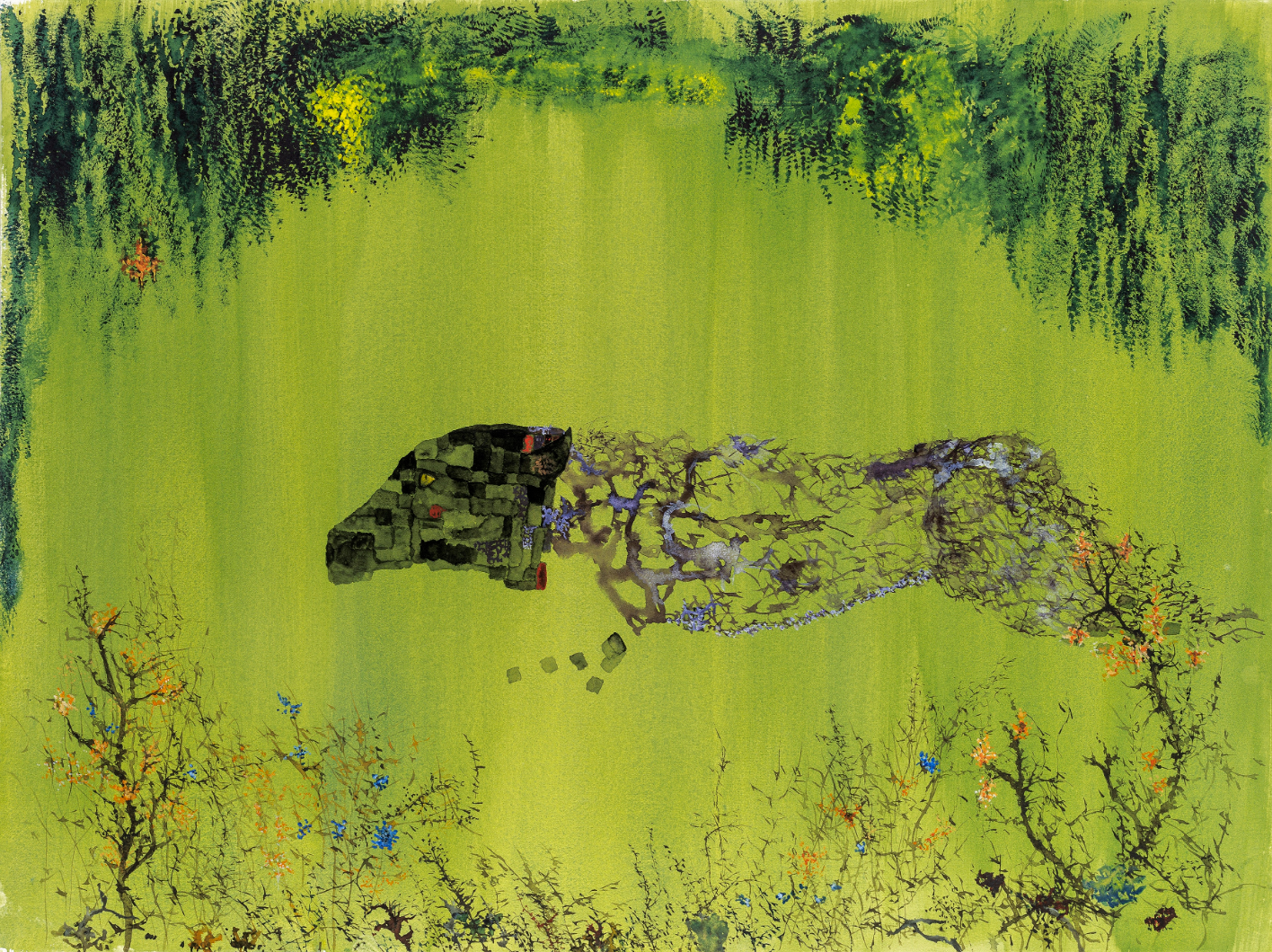
At the moment, Lurie is writing a memoir about his rather extraordinary life. He’s also currently living on a Caribbean island and filming a new show called Painting With John, which promises a candid view of the man and his artwork. In the meantime, he made time to sit down for a series of email interviews with me — when the island’s Wi-Fi was working, that is — to discuss his paintings, his music, his storied life in the New York art scene of the early 1980s, his decades leading his jazz band the Lounge Lizards, as well as his iconic cult classic fishing show.
I should note, however, that, at his request (or better put, his condition to an interview), none of his answers have been edited, and thus, they appear exactly as how he sent them to me.
* * * * *
In those early New York days, did you consider yourself a musician, a painter or both?
Musician. Composer.
Your compositions for the Lounge Lizards were called “fake jazz.” Who came up with that nickname?
The first gig we did we played maybe five original pieces and two [Thelonious] Monk tunes — “Epistrophy” and “Well You Needn’t.” It was a period where jazz just seemed to be done. There was the avant garde scene, which was becoming musically more and more indulgent. Or you could politely play tunes from the book, to people eating quiche, or there was the institutional, academic scene where people could really play but had nothing to say that you wanted to hear. What was happening was the punk and No Wave scene. It was alive. Musically fairly primitive but it was real and exciting.
Traveling with The Lounge Lizards seems like it’d be insanely high-spirited, yet also punctuated with moments of sheer joy and fun. Of course, I’m assuming it was maddeningly frustrating at times, too.
Yeah, it was all those things. The music was so serious that we worked really hard on it, and I am sure it wasn’t so easy playing in my thing. I once heard a live record of Tito Puente’s band playing live where they shifted tempo perfectly, all together. They could stop on a dime and were perfectly in tune. I said to the person I was with, “I bet Tito Puente was a real monster.” Because with a large band, there is kind of no other way to run it and keep it good.
But I was pretty wild too. When Erik Sanko joined the band, he was underage, and before we went on tour, I had to sign something saying I was responsible for him. Erik would say later that it was “like giving an egg to a gorilla to take care of, but it was okay because the gorilla signed for it.”
Who were your jazz role models? Were they the ones whose shadows show up in your sound –– men like Mingus, Coltrane, Ornette Coleman?
Those are the big ones. [Eric] Dolphy should be in there. Out to Lunch is such an amazing breakthrough in jazz and I wish that had been the direction it had gone in. I suppose people are just not good enough to play like that. I can’t imagine how amazing it would have been to play on top of Richard Davis and Tony Williams doing what they are doing on that record. But first it was blues and [his brother] Evan and I were kids, like, 15 and 16, and the older musicians from Boston were all into jazz. I remember listening to Coltrane and having no idea what it was supposed to be, but I found it exciting that there was a music that I couldn’t understand. Like someone had introduced me to a language that I didn’t know existed. Those Les McCann and Eddie Harris records helped bridge the gap a bit.
Were you painting when you first arrived in New York, or was that something you began to explore once you moved to New York?
I always painted. I felt drawn to doing it. But the music always came first. Then everyone I knew was suddenly making a fortune selling art. So that was weird, and I suddenly got famous for something I really do not do well or seriously, which was acting. So I painted in private, but for me, when I felt compelled to do it.
Very early in the 1980s, I was doing a lot of little stuff on paper. I did maybe 10 canvases with acrylics and some other stuff — a kitsch statue of a ceramic horse, that I glued things to, stuff like that. But by the second half [of the 1980s], almost nothing. I was just too busy, unless I went on vacation. Then I would always bring some art stuff to mess around with. I remember that after the crew left on the Costa Rica fishing show, I did some good ones with oil pastels. But music was very much my main thing.
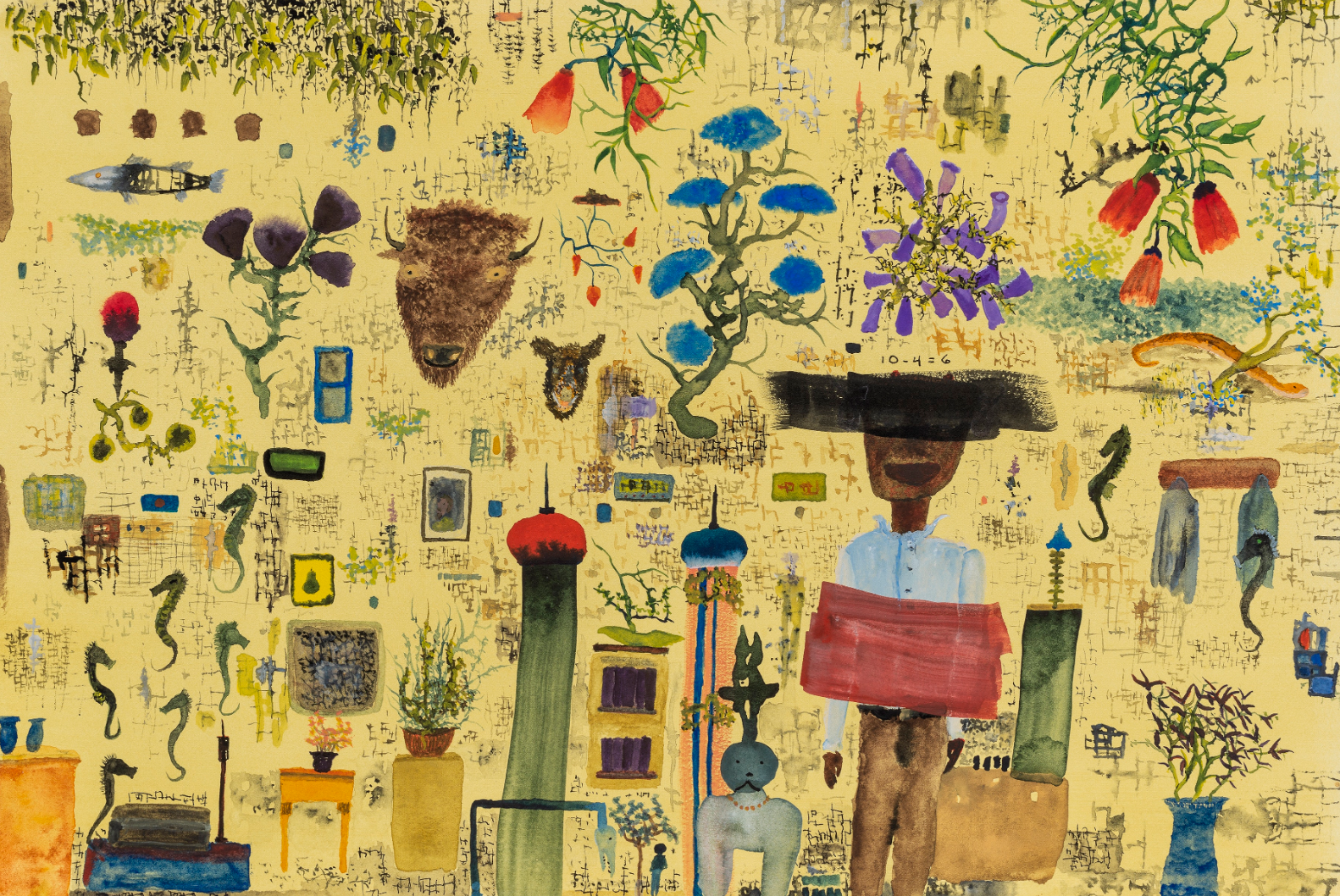
The downtown New York art scene is now treated as myth and legend. You were part of its beating heart. Did it feel like anything at the time? Did it feel special?
There was a lot happening. And at the time there wasn’t really anywhere else to go, so every talented weirdo from around the country and around the globe, showed up in the East Village. But we didn’t sit around saying, “This is historic.” And there were people who were something special who went by the board and didn’t get their thing — [people like] Richard Morrison and Steve Kramer.
As far as scenes go, did you want to be part of it all?
I had been pretty much a loner before that. Then I bumped into this exploding scene. It was pretty exciting. Some of it, maybe a lot, was cheap and ridiculous, but there was something happening.
Rich people fetishizing the urgency of poverty is timeless. What was your attitude toward/about all the rich people circling the downtown art scene?
We were on fire and going so fast, we hardly even noticed them. We sort of sneered at them and grabbed whatever they were handing out as we rushed by. But we were it and were not particularly interested in anything they had to offer. People were living very much in the moment and didn’t think much about money or careers.
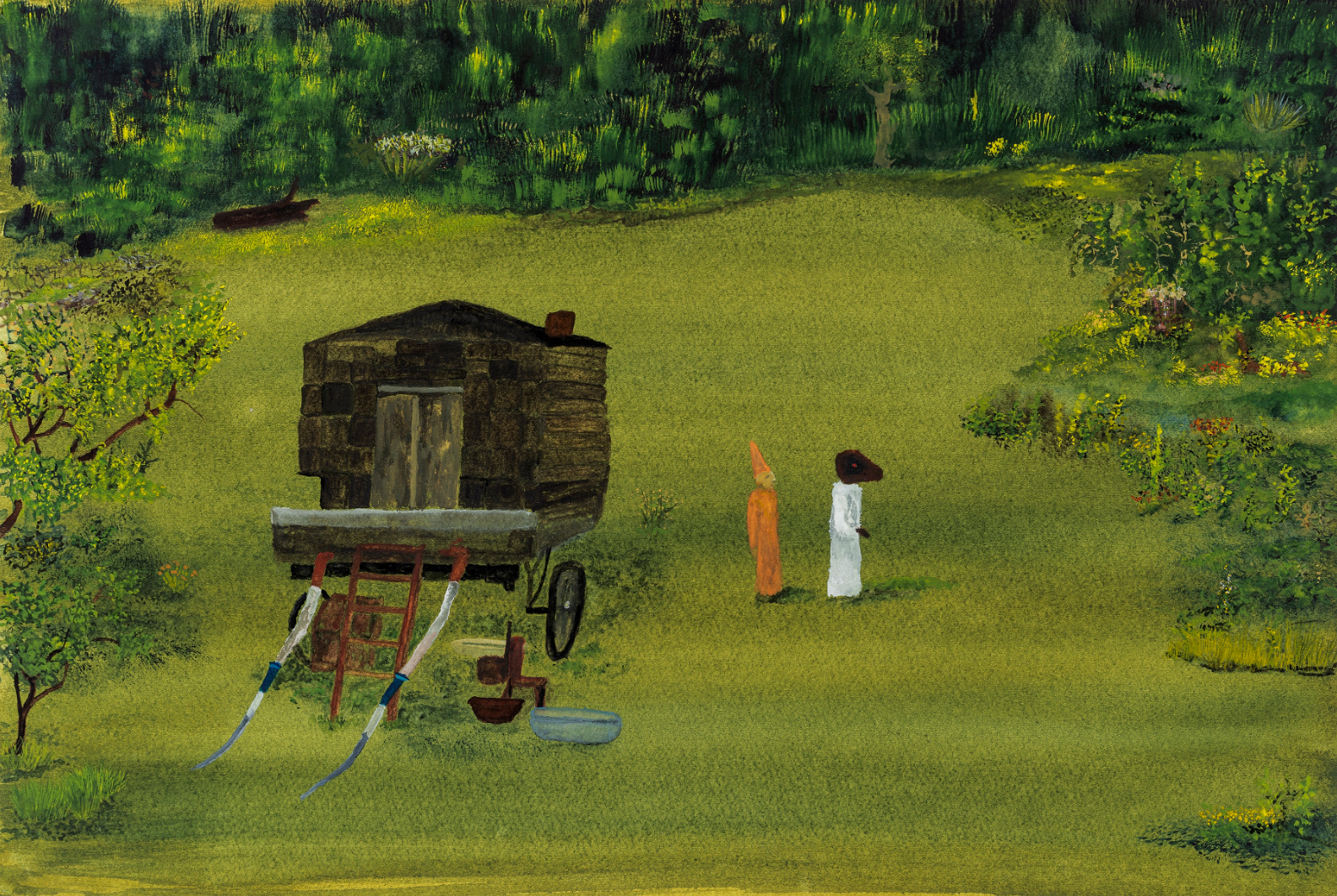
Did you ever get into trouble for offending or mocking the old, white and wealthy?
I am sure it happened all the time, but we didn’t even notice. I am sure it bit me in the ass later. Like, when Stranger Than Paradise came out, Letterman’s people asked me to be on the show through my manager [Frank]. But first I had to go in advance and tell three funny stories. I said, “I have to do an audition to be on a talk show? Fuck that, Frank.” Frank, thinking he could convince me to do it later, told them “Yes! Of course John will come in and tell three funny stories.” But when the time came, I had disappeared on a healthy two-day binge, and Frank couldn’t find me. When I got home, there were 471 panicked messages from Frank on my answering machine, saying that I was missing my Letterman audition.
Some years later, in 1990, I couldn’t get a record deal for the Lounge Lizards and invested all of my own money to make Voice of Chunk and started a record company to get it out. So I wanted to go on Letterman to promote it. They said, “Our records show that you didn’t show up for your three funny stories. So now you can never be on the show.”
Has there ever been a good movie/book/fictionalization of the energy that was in East Village/Downtown New York in the late 1970s and early 1980s?
Blade Runner.
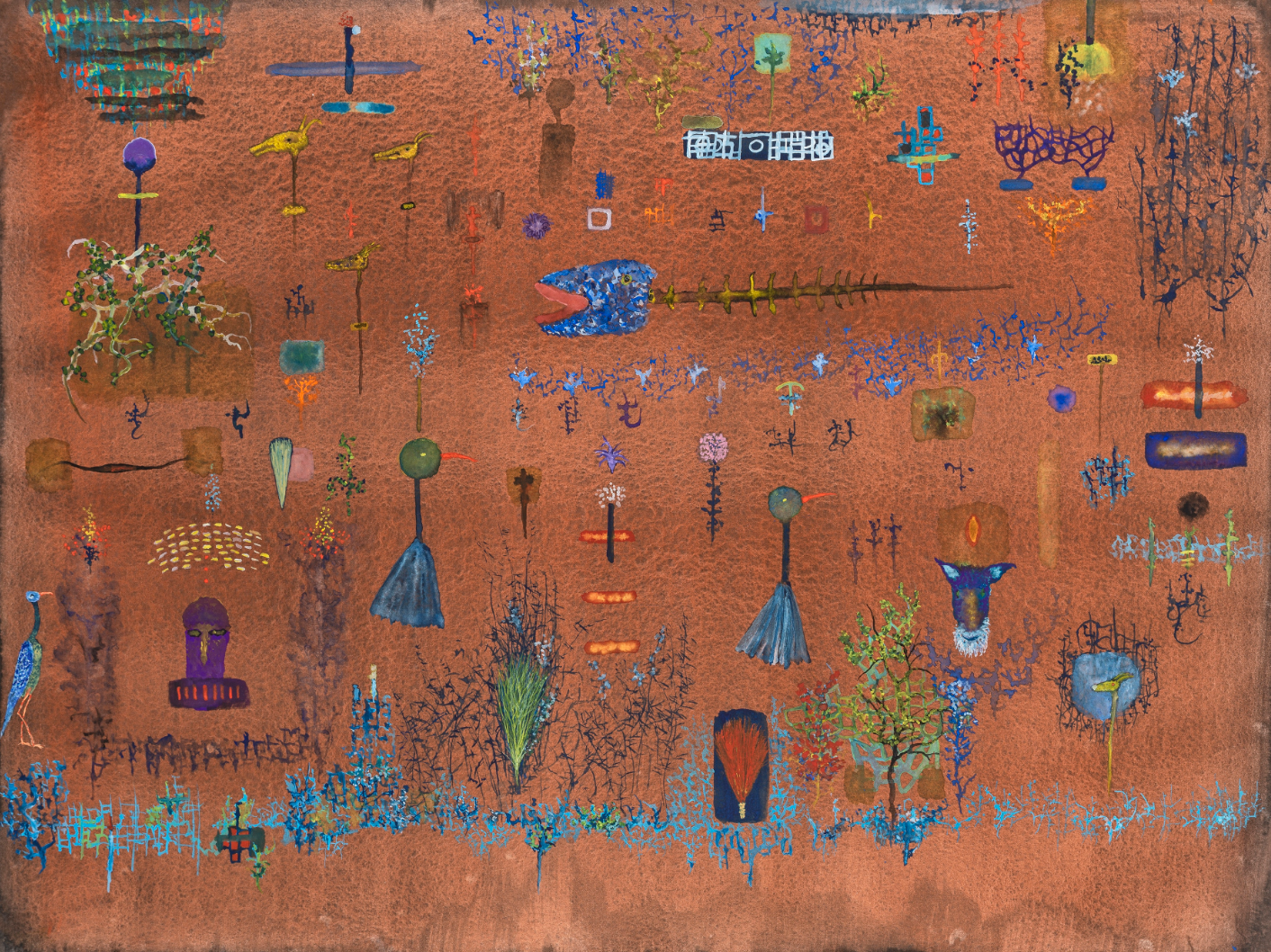
You’ve expressed to me the frustrations and tenderness of your friendship with Jean-Michel Basquiat. As an artist and cultural figure, he remains an enigma. You knew him well. What’s a favorite memory of yours?
I will tell you the first one that popped into my head — Jean-Michel, Andy Warhol and I were somewhere and there was a taxi strike and we couldn’t get wherever we were going next. So I called my manager, Frank, who picked us up. We were on 6th Avenue, but going downtown because of construction on 7th. They had divided 6th Avenue into a two-way street for a couple of blocks, using those traffic cones.
A guy in this fancy, tiny, low-to-the-ground sports car came driving really fast the other way and was weaving in and out of the traffic cones like a ski racer in a slalom. This guy’s driving skills were remarkable. Me, Andy and Jean were all in the back seat of Frank’s SUV, with Andy politely going “Oh.” After each swerve the guy made, “Oh,” “Oh.” Kind of like your grandma at the end of the fireworks. But Jean-Michel was shrieking, “He’s bad man! He’s bad!,” with absolutely delight.
What’s a frustration from your time together? And what did he say about your artwork?
I will combine the two questions. There was that thing at Mr Chow, an artist dinner thrown by the Goodes for their club Area, and every artist you can think of is there. And Michael Halsband, I think, is going to take a group photo. It’s a famous photo, I am sure you can find it.
And it really is everyone — [David] Hockney and [Francesco] Clemente and Julian [Schnabel] and Keith and Dennis Oppenheim, even LeRoy Nieman and his mustache. Jean-Michel is the only person there who knows that I paint. We have spent hundreds of hours painting together, and he is yelling, “John Lurie can’t be in the photo. John Lurie is not an artist.” Everyone wants me in the photo, but Jean, I guess we were fighting at the time — we were always fighting. And he is so adamant that I can’t be in the photo that they set up the shot without me. So at the last second, I go running and jump into the photo. Which is why William Wegman is laughing like that.
I suppose because we were so similar in both good and bad ways, we were always fighting. And he went from being this kid, who slept at my place and followed me around asking advice all the time, to this really powerful entity in a short amount of time. And it wasn’t because of his success. It was some deep thing he had.
He could look at you and see everything and had no patience for anything that wasn’t real. So when I was feeling off-balance or insecure, he could massacre me with a glance. But he could also open your heart completely with a different glance.
I was in L.A. to do a saxophone solo. He had picked me up at the airport, and after we stopped at Fatburger, we went to Gagosian’s, where he was staying. I was practicing in Gagosian’s basement while he painted. I was discovering this really nice thing on the soprano, when he stopped painting, looked at me and did that grin. Man, that grin was something. I can still see it — and I don’t mean his grin in general, I mean his grin at that moment.

And what did you say to him about his paintings?
I was very encouraging early on. From when he was a kid sleeping at my place, which went on for a couple years on and off. And we would make these things together on paper or cardboard or shopping bags or whatever we had, with oil pastels. He had that thing where he was compelled to do it. Just relentless.
Very little time went by, but like two years later, everything had changed. I lived in the middle of the block on Third Street where the men’s shelter was and Andy [Warhol] had given him this really nice house on my corner, but on the other side of the Bowery, which made it feel like a world of safety compared to where I was. I would be in and out of his place a few times a day. I was there in the afternoon, and he had painted perhaps my two favorite paintings of his — an angel with a halo and an elephant with some writing. I fucking loved them.
I went home to practice and came back like five hours later. I liked these paintings so much, I asked if I could see them again, which I had never done before. He said, “Oh, I painted over them.”
It really bothered me. I was almost angry. I really thought they were two of his best and now they were gone. It makes me even more nuts now because he is gone. But I have them in my mind.
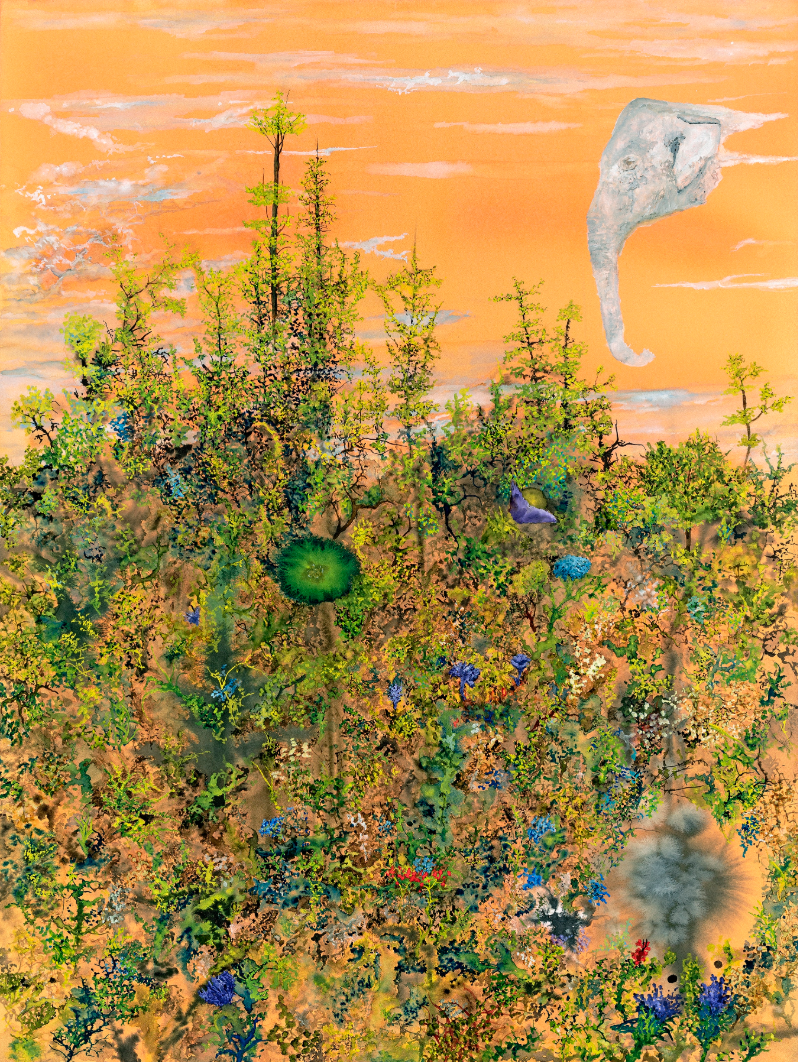
You were painting and playing music that was critically respected and that you were proud of. Why did you decide to try acting? Did Jim Jarmsuch ask you to appear in his films, and you were like, “Sure”?
We were all making these Super-8 movies. And everybody was doing everything in each other’s movies. This was before Jarmusch made Permanent Vacation and Stranger [Than Paradise]. Not much before, but things were going so fast then that six months seemed like a decade. But Stranger, as it started out, was this short little thing that we did because Wim Wenders had given Jim his leftover film from State of Things.
And I pushed and pushed him to do something with it. He had been stuck for a year trying to write this movie Garden of Divorce starring me and my girlfriend Maria Duvall. But he was really frozen, trying to get this script finished. I got a lot from Eric Mitchell who would just shoot everything kamikaze style. And I sort of threw that energy that Eric had shown me onto Jim, to get him to do a little movie with the leftover film from Wim.
One thing that people don’t realize, maybe even Eric Mitchell doesn’t realize it, but Stranger Than Paradise would never have happened if I hadn’t picked up on Eric’s punk, ferocious, “damn the torpedoes” attitude toward filmmaking, which I believe he got from [Rainer Werner] Fassbinder, and put that out at Jim.
Was it weird to become famous for something that wasn’t music or painting, and then be asked to do that at the expense of the others? Did it ever confuse you as to how it all happened?
Fame rarely makes much sense, in a lot of ways. But there are so many good actors now, there are an abundance of really good actors and so few good things for them to be in. And then I, who couldn’t care less about it, stumble into it. And I was so serious about the music, but the music was not to be treated seriously or with any respect. Then I am in these movies and the serious music world went, “See? He can’t be doing breakthrough music! He is an actor!” I regret doing those movies.
You also starred in what was, at the time, the most controversial movie ever — Martin Scorsese’s The Last Temptation of Christ. What was that production like for you?
Marty was my hero. And I was thinking about directing at that time and did it as more to watch Marty work than anything else. I hoped Marty would view me as his long-lost son and he’d take me under his wing. But it didn’t go like that. Like, at all. But Morocco and the Gnawa musicians that I met and played with there, were the big thing for me of that time, of that trip.
What was it like traveling with Willem Dafoe? He was playing Jesus, and you were one of his apostles. Was that extra weird?
Willem can be a ton of fun. We were out one night in Morocco, most of the cast and crew feared leaving the hotel. We were out kinda looking for a bit of trouble. We walked down this alley, and two guys appeared out of nowhere. They pointed at Willem and screamed together, “Klaus Kinski!” Then they laughed. Then they pointed at me and yelled, “Mick Jagger!”
But the amazing thing was that one of them looked exactly like Dustin Hoffman. I looked at Willem and said “Dustin Hoffman.” Then we both pointed at the guy and screamed “Dustin Hoffman!” Then all four of us were standing in this alley, laughing our heads off. We would walk a few feet and then all stop, point at each other and scream out names.
One night, we were shooting out in the desert. And Willem and I were fooling around. He is like a little kid when he fools around. They called out, “Shooting in five minutes,” and I watched his face just change. I swear even his eyes seemed to change color.
Dafoe was later on an episode of Fishing With John. You two go ice fishing. What’s the story behind your TV show?
I came home after being out all night, I turned on the TV, and on every channel just about, there were fishing shows. I thought, I want to do this. It looks relaxing. Plus, going all the way back to Marlin Perkins when I was a kid, he would tell you what the animals were thinking. I definitely wanted to do a show where I told people what the animals were thinking.
You now have a new show, Painting With John. You’re currently shooting that. Will it have a similar structure to Fishing With John — i.e., will you have guests who drop by while you attempt to paint?
No, it is kind of centered around my life as a hermit on the little island I live on now. So there won’t be guests, unless I can get people to come here and do the elephant. It is sort of Bob Ross meets Gauguin meets Dave Chappelle. It will just be me painting and telling stories. Ann Mary, who shops and cooks and hits me with a giant wooden spoon, and Nesrin, who runs my business, may be in it, if they agree. I hope they do because they both have star quality and are good together.

You have advanced Lyme disease, which took years to diagnose. The period before the diagnosis was a devastating time for you in many ways. What has that battle taught you about yourself that makes you proud, or gives you a sense of triumph?
It is 80 percent gone. It probably will never be gone completely; there are still bad days. Honestly, it doesn’t feel like a triumph. But I am proud of how I have handled it, and how the paintings grew and grew during this time. It seems like each person who has this thing has different symptoms. It is just the weirdest. Mine are mostly neurological.
Last year, you found out you had cancer, too. Again, you stubbornly fought back, and now it’s in remission. When pressed, how do you battle to hold onto life?
There is no evidence of cancer left in me. It’s odd because I never for one moment didn’t think I would not beat the cancer. I knew the treatment was going to be hideous. Actually, I didn’t have a clue how hideous. The mind can’t conjure that much hideousness unless you are living it. Treatment ended nine months ago, and I still have side effects. But if I force myself to think about it — the radiation — and whew, it just burned holes in me — in my mouth and throat. It was so bad, there were days that I couldn’t even take a sip of water.
I had, I don’t know what to call it, a “mystical” experience when I was 17 or 18. I spent the next three or four years trying to repeat it and trying to know how I could live in that place I had gone for a brief moment. I studied everything — all of the religions and the mystics. Gurdjieff had a big impact on me. Something is deep in my essence from that time.
On a more positive note, what artists are exciting you these days? Does anyone have a similar energy that you witnessed in the East Village back in the day — that realness and playfulness, someone making art bursting with a sense of newness?
Everything is so corporate now in what you get a chance to see and hear. I am sure there are great things out there, but they are not in my line of sight. I just got a poetry book by Charlyne Yi that I really like. I certainly love her spirit. Painters, I have no idea. I am still discovering people from centuries ago.
